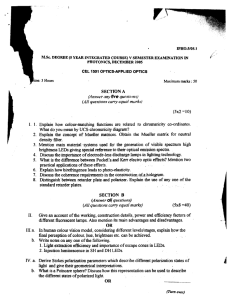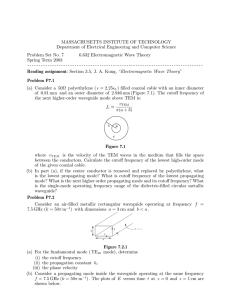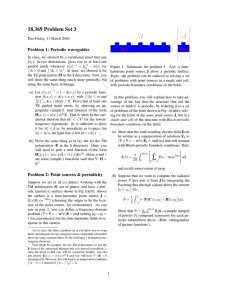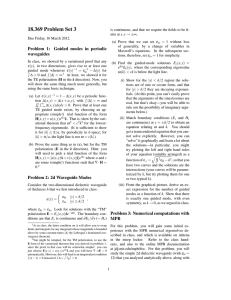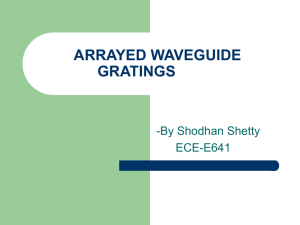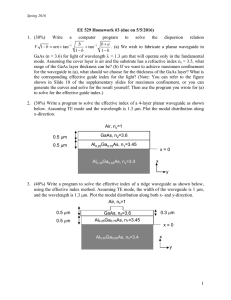Waveguide devices based on electro
advertisement
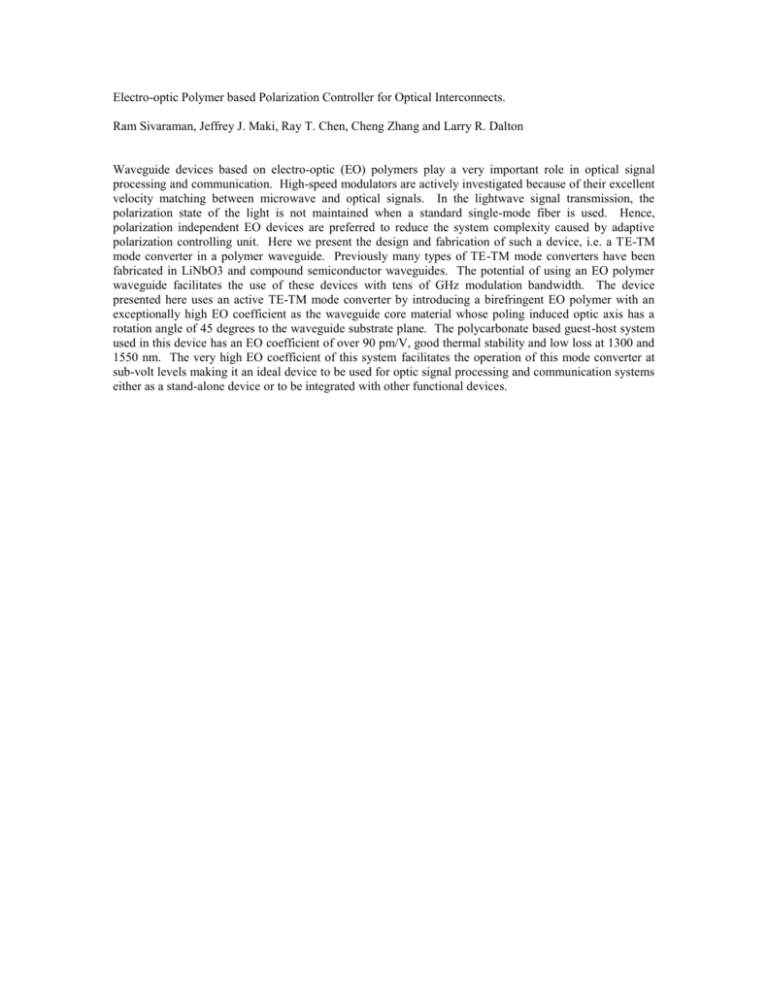
Electro-optic Polymer based Polarization Controller for Optical Interconnects. Ram Sivaraman, Jeffrey J. Maki, Ray T. Chen, Cheng Zhang and Larry R. Dalton Waveguide devices based on electro-optic (EO) polymers play a very important role in optical signal processing and communication. High-speed modulators are actively investigated because of their excellent velocity matching between microwave and optical signals. In the lightwave signal transmission, the polarization state of the light is not maintained when a standard single-mode fiber is used. Hence, polarization independent EO devices are preferred to reduce the system complexity caused by adaptive polarization controlling unit. Here we present the design and fabrication of such a device, i.e. a TE-TM mode converter in a polymer waveguide. Previously many types of TE-TM mode converters have been fabricated in LiNbO3 and compound semiconductor waveguides. The potential of using an EO polymer waveguide facilitates the use of these devices with tens of GHz modulation bandwidth. The device presented here uses an active TE-TM mode converter by introducing a birefringent EO polymer with an exceptionally high EO coefficient as the waveguide core material whose poling induced optic axis has a rotation angle of 45 degrees to the waveguide substrate plane. The polycarbonate based guest-host system used in this device has an EO coefficient of over 90 pm/V, good thermal stability and low loss at 1300 and 1550 nm. The very high EO coefficient of this system facilitates the operation of this mode converter at sub-volt levels making it an ideal device to be used for optic signal processing and communication systems either as a stand-alone device or to be integrated with other functional devices.

